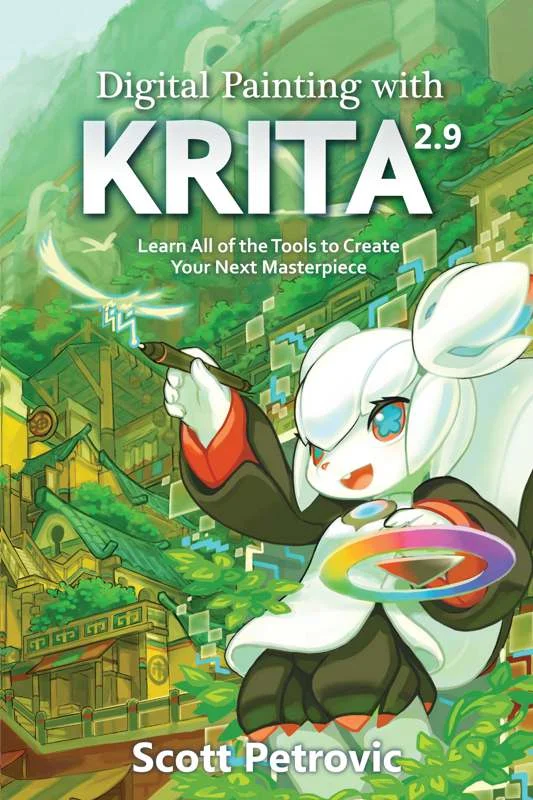[ad_1]
2015 was a big year for the Krita project. They had a successful crowdfunding campaign over the summer, which helped fund the development of an onslaught of features targeted for versions of 2.9 and beyond. With everything from big-time performance jumps when using large brushes, to the addition of support for animating, Krita’s growth has spiked and the project continues to get attention and high praise among digital artists.

Of course, when development moves this fast, keeping up the documentation is often difficult. Materials end up getting spread across the Internet, go out of date quickly, or are conveyed in a variety of different voices and media. Near the end of last year, one of Krita’s developers, Scott Petrovic, stepped up to provide a solution to this growing problem by publishing Digital Painting with Krita 2.9. This is the first book in English to specifically cover the use of Krita in digital painting, and as Krita’s popularity grows, resources like this become more vital. Furthermore, because this book’s author has a personal emphasis on Krita’s user interface, imagining a better-credentialed person to put this book together is difficult.
I received a digital copy of the book for review, so continue reading to find out how well it stacks up.
Contents
First, let me point out that the 230 pages in Digital Painting with Krita 2.9 are structured as a reference book, my favorite kind of book. In a time in which there’s a preponderance of tutorial-based resources that show how someone else works with a tool, I really appreciate a book that tells you about the tool and how it works, but leaves the actual use of that tool to, well, the user. References are great for looking up how and why a specific feature works. And if you read the book from front to back—as I did—you might find yourself thinking, “Oooh, I know something cool I can do with this feature!”
As you would want from a book about a tool for creating visual content, Digital Painting with Krita 2.9 is packed with good-quality, high-resolution, full-color images and figures to help illustrate where features are and how they work (as well as show off cool artwork made in Krita). As a reference book, it isn’t meant to be read from cover to cover. Regardless, the chapters are laid out with a practical structure that starts with simple explanations of the basics and works up to more in-depth and advanced topics on customizing and optimizing Krita for the way you like to work.
One thing to note is that, for the most part, the book doesn’t go into heavy detail on any specific painting techniques. There’s a greater focus on what kind of features are available in Krita and how you can optimize the program for your projects. It’s on you and your experience as an artist to decide how exactly you want to put those tools to work. Also, despite being a reference book, Digital Painting with Krita 2.9 is not an exhaustive compendium of every checkbox and widget. Doing so could’ve easily ballooned the size of the book and, more importantly, could have made for a dreadfully dull and largely uninformative read. Generally speaking, the book does a good job of giving you exactly what you need to know without getting lost in the weeds of minutia.
Conclusion
I’m tempted to say that this book is the best one out there because it’s the only one on this specific topic. However, that wouldn’t do it justice. Digital Painting with Krita 2.9 is a good book, a very good book. I was a little bit disappointed that some of the simple things about Krita’s interface weren’t covered,such as the color conventions used in the default brush set. I don’t know if missing those little details is an oversight or if the author didn’t cover them because he thought the reasoning was obvious. In any case, I’ve often found that the knowledge of those small bits of information is what ends up speeding up my own work, so it’s a little sad that more of them weren’t covered.
That said, I heartily recommend Digital Painting with Krita 2.9, which belongs on the bookshelf or digital library of any Krita user. Whether you’re new to digital painting or just new to Krita, this book can help take your understanding and technique to the next level.
[ad_2]
Source link